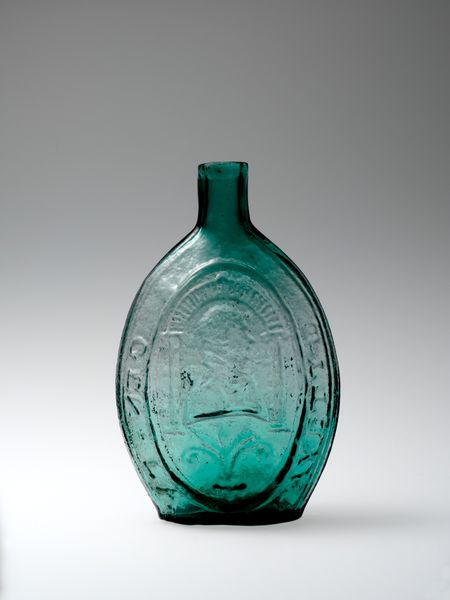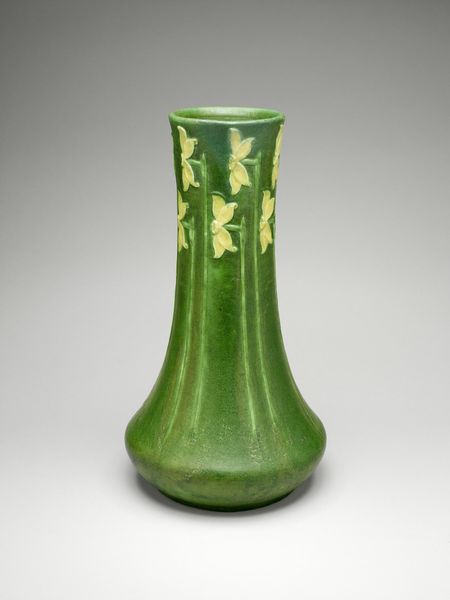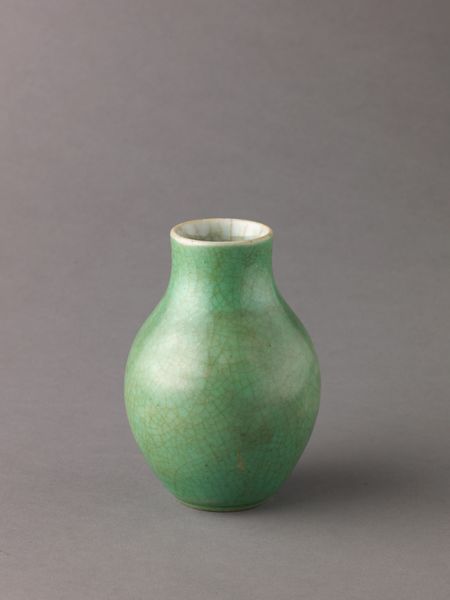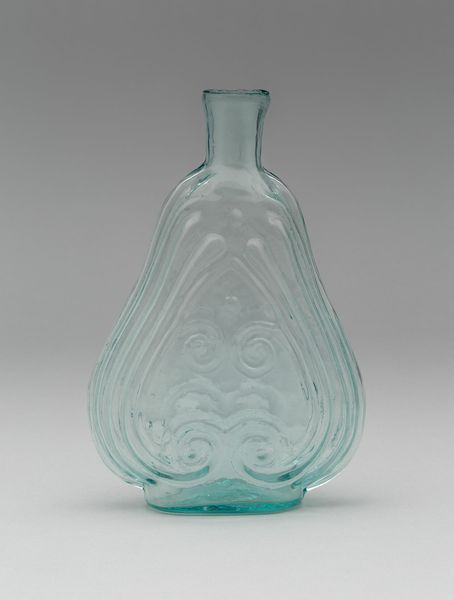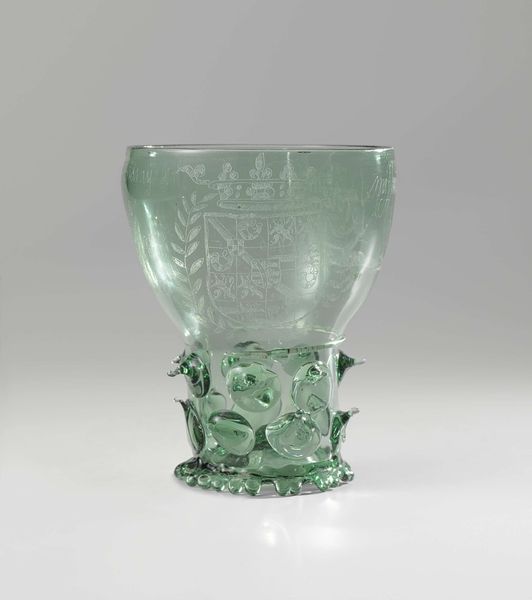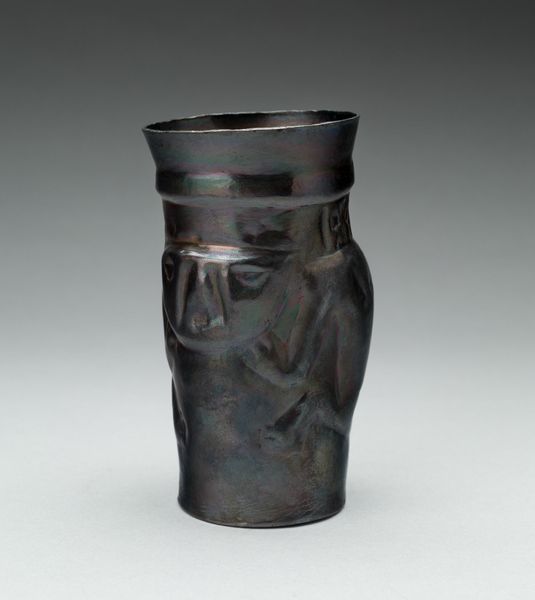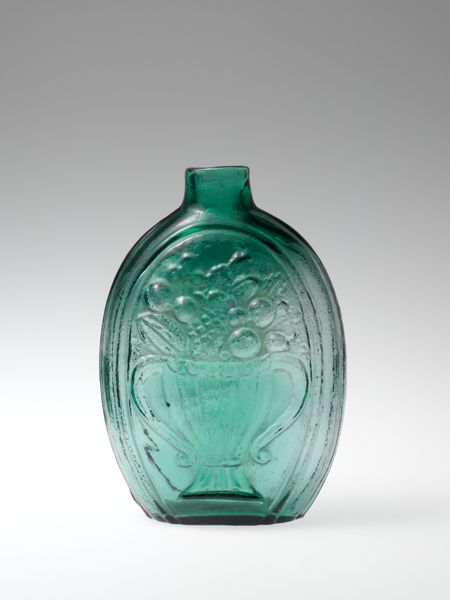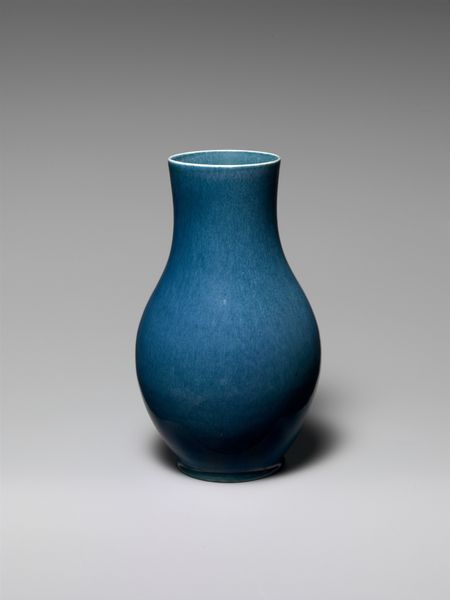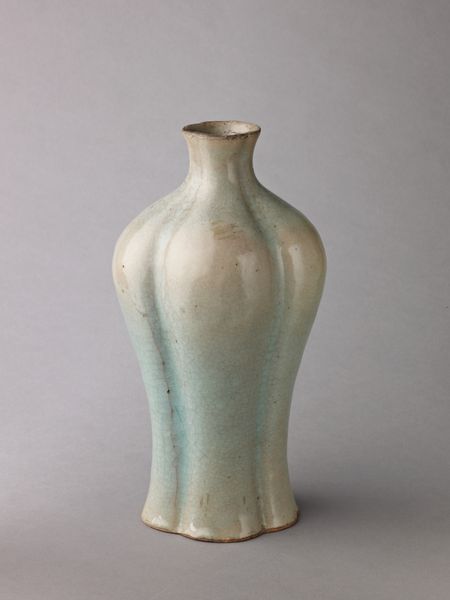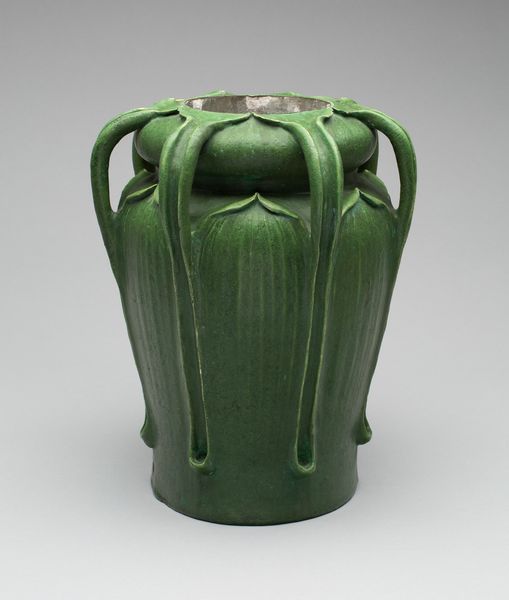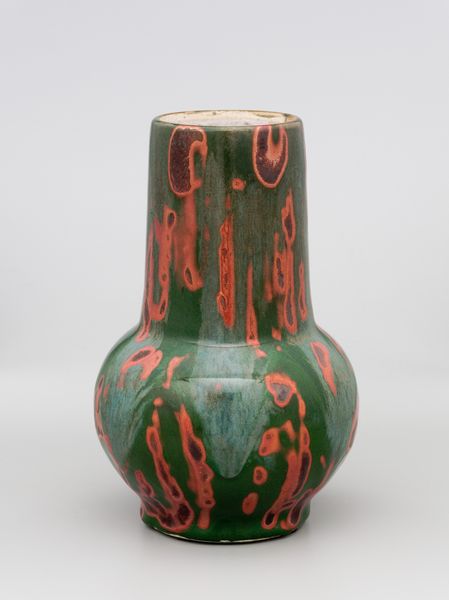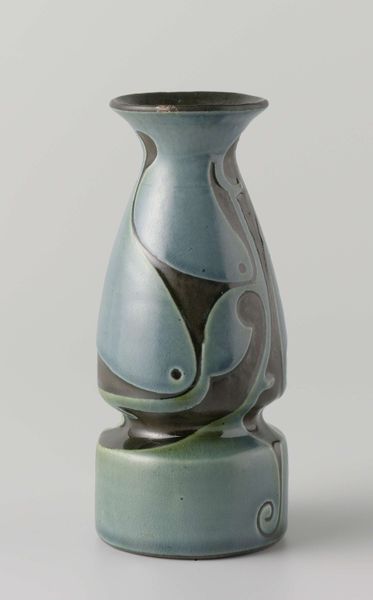
ceramic, sculpture
#
art-nouveau
#
ceramic
#
vase
#
sculpture
#
ceramic
#
decorative-art
Copyright: No Known Copyright
Editor: So, this is a ceramic vase by Mary Chase Perry, made sometime between 1903 and 1907. I’m struck by how subdued and natural the green color is. It gives off a really earthy, almost serene vibe. How would you interpret this piece? Curator: I think the earthy tones and stylized floral motifs speak volumes about the cultural moment in which it was created. This vase emerges from the Arts and Crafts movement, which stood in opposition to industrialization and mass production. Think about it: handcrafted objects were becoming increasingly rare. Editor: Right, it's a clear rejection of industrial aesthetics. Curator: Exactly. The emphasis on handmade ceramic and the naturalistic details signal a deliberate return to traditional values. Also consider the context of the Decorative Arts movement at the time – everyday objects were elevated to the level of high art, which served to democratize art consumption. It also helped women, like Perry, break into art. What do you notice about its placement in a museum setting? Editor: Hmm, its display is interesting. Placing a utilitarian object like this in a museum kind of elevates it, giving it a new status and implying that decorative arts, and this piece specifically, have artistic and cultural value that are worthy of contemplation. Curator: Precisely! Museums play a powerful role in constructing canons and legitimizing artistic practices. Where would you expect to see such a vase outside of a museum? Editor: Maybe in a well-to-do home from that period? I guess its placement in either space really shapes how we perceive its function and meaning. Curator: Yes, and it is thanks to museums like the Minneapolis Institute of Art that Perry’s legacy continues to inspire today. Editor: I didn't realize how much its historical context and current placement influences how we see a simple vase. Curator: Absolutely. Considering the cultural and institutional history opens up whole new avenues for understanding and appreciating art.
Comments
No comments
Be the first to comment and join the conversation on the ultimate creative platform.
